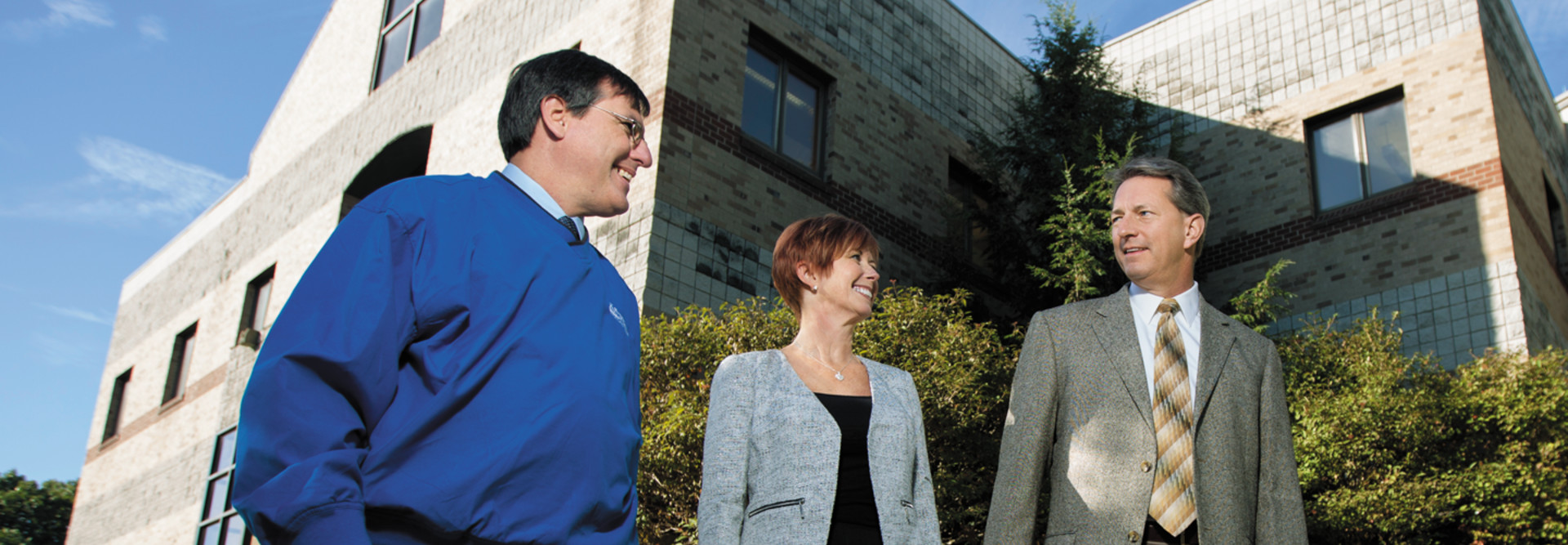Video Powers a Global Education Experience
When students at Franciscan University of Steubenville study abroad at its Austrian campus, it’s a chance to immerse themselves in another culture and explore Europe.
But when it comes to campus life, they expect to enjoy the same technology experience that’s available to them back home.
That means fast Wi-Fi, reliable access to email and other applications and zero downtime. To ensure a seamless experience, the university’s Ohio-based IT department spent the past summer upgrading servers and networking equipment at Franciscan’s overseas campus.
“When they go over there, they expect everything to work,” says Susan Dukich, the university’s manager of help desk and IT procurement. “We want to make sure they can work on a paper, Skype with their mom, or do whatever they need to do.”
U.S. colleges are continuing to expand internationally. Today, 229 international branch campuses are in operation by universities worldwide, up from 160 in 2008, says Jason Lane, an associate professor and co-director of the Cross-Border Education Research Team at the University at Albany.
Some international campuses offer courses strictly for U.S. students who want to study abroad, while other campuses offer full degree programs and serve mostly local students. Some are a mix of both, he says.
The benefits of going global are threefold: It adds to a university’s prestige, attracts new students and generates potential new revenue, and allows American students and faculty to study or work abroad, Lane says.
For IT departments, going international presents new challenges. They must deploy and manage IT infrastructure in a facility that is sometimes half a world away. Some travel to the new site to build out the initial infrastructure and manage it remotely. Some eventually hire remote IT staff to manage day-to-day operations.
Seamless Integration
Every semester, about 200 students travel to Franciscan University’s overseas campus in Gaming, Austria — a converted and restored Carthusian monastery built in the 14th century.
When IT Director Kevin Sebolt visited the campus nearly a decade ago, the tech infrastructure was in desperate need of an upgrade. The campus offered two computer labs and a 128-kilobyte-per-second ISDN line, but very little IT infrastructure.
Since then, the team has built a fiber network to the monastery, which provides 50-megabit-per-second speeds. They’ve also implemented a solution where networking equipment in the Austrian campus connects seamlessly back to the main Ohio campus.
Today, by using new Lenovo servers, plus networking and Wi-Fi equipment from Extreme Networks, the IT staff can provide study abroad students with the same technology experience afforded U.S. students.
Through a site-to-site IPSec virtual private network connection, students and faculty can use campus desktop computers or their own notebooks to authenticate back to the data center at the main campus, which provides access to email, the learning management system and other campus applications, says Dennis Breen, the university’s director of telecommunications and networks.
“They have all the functionality as if they were in their dorms in Ohio,” Breen says.
This summer, 2008-era servers and networking equipment were replaced with three new Lenovo servers and new Extreme Networks networking equipment. A network administrator from the Ohio campus visited the Austrian campus to install the new equipment. IT had previously virtualized servers to run administrative tasks, such as directory services and file servers, so it was just a matter of moving the virtual machines to the new hardware, Sebolt says.
The greatest enhancement was a much-improved Wi-Fi network. The network administrator installed additional access points in existing locations and added APs in new areas, including the dorms, which was something students craved.
For support, several students and an employee in Austria now assist with troubleshooting. But for the most part, the Ohio-based team can monitor and manage the IT infrastructure using remote management tools, Breen says.
Cloud and Video Conferencing
Temple University offers overseas campuses in Rome, Italy, and Tokyo. The Rome campus, built in 1966, comprises four floors of a building overlooking the Tiber River. The Tokyo campus occupies several floors of two buildings in the Minami Azubu and Mita districts.
The university has standardized on many cloud services, including email, online storage and Office 365, allowing students easy access to those resources over the web. Students and faculty can also log in to the campus network back in Philadelphia to access the LMS and other campus applications.
“We try to offer the same technology services that we offer on our main campus, so students and faculty have the same experience with technology,” says Barbara Dolhansky, Temple’s interim vice president of computer services and CIO.
IT deployed Polycom equipment at both campuses, so that deans and other administrators from Rome and Tokyo can attend meetings with senior leadership on the main campus, Dolhansky says. To simplify management, Temple hired an IT contractor to manage technology on the Rome campus. The Tokyo campus, which has more students and offers its own degree programs, has its own CIO and an eight-person IT support staff, Dolhansky says.
Temple relies on WebEx for communication. If administrators in Japan have trouble accessing an application on the main campus, for example, the IT staff at the main campus can connect remotely to their computers and troubleshoot.
The university also offers courses online through WebEx. Denise Connerty, Temple’s assistant vice president of international affairs, says students are encouraged to take courses abroad that will help them explore and engage with their host countries. But occasionally students also require a specific online class.
Keys to Success
One key to successful IT management at international campuses is standardization on a particular set of technologies.
Domestic and international IT staff should collaborate regularly and strive to work as a team, advises Claudio Marinangeli, director of operations and IT for St. John’s University’s European campuses.
“Always think about technology in universitywide terms,” Marinangeli says. “Having technology that applies to all sites shapes the experience for our students and faculty. More importantly for students, it ensures that they have access to the same level of quality of technology resources.”
For example, the local IT staff at St. John’s campuses in Rome, Paris and Seville, Spain ensure their study abroad students have the desktop applications they need and can use a VPN to connect to the main New York campus to access central university resources, Vice President and CIO Joseph Tufano says.
“By sharing the core technology, the number of IT people you need at remote sites is reduced,” he says. With a global IT team, St. John’s IT staff in each location can monitor each other’s IT infrastructure during their respective off-hours, which helps improve uptime and availability.
“It strengthens us because it gives us better coverage,” he says.









